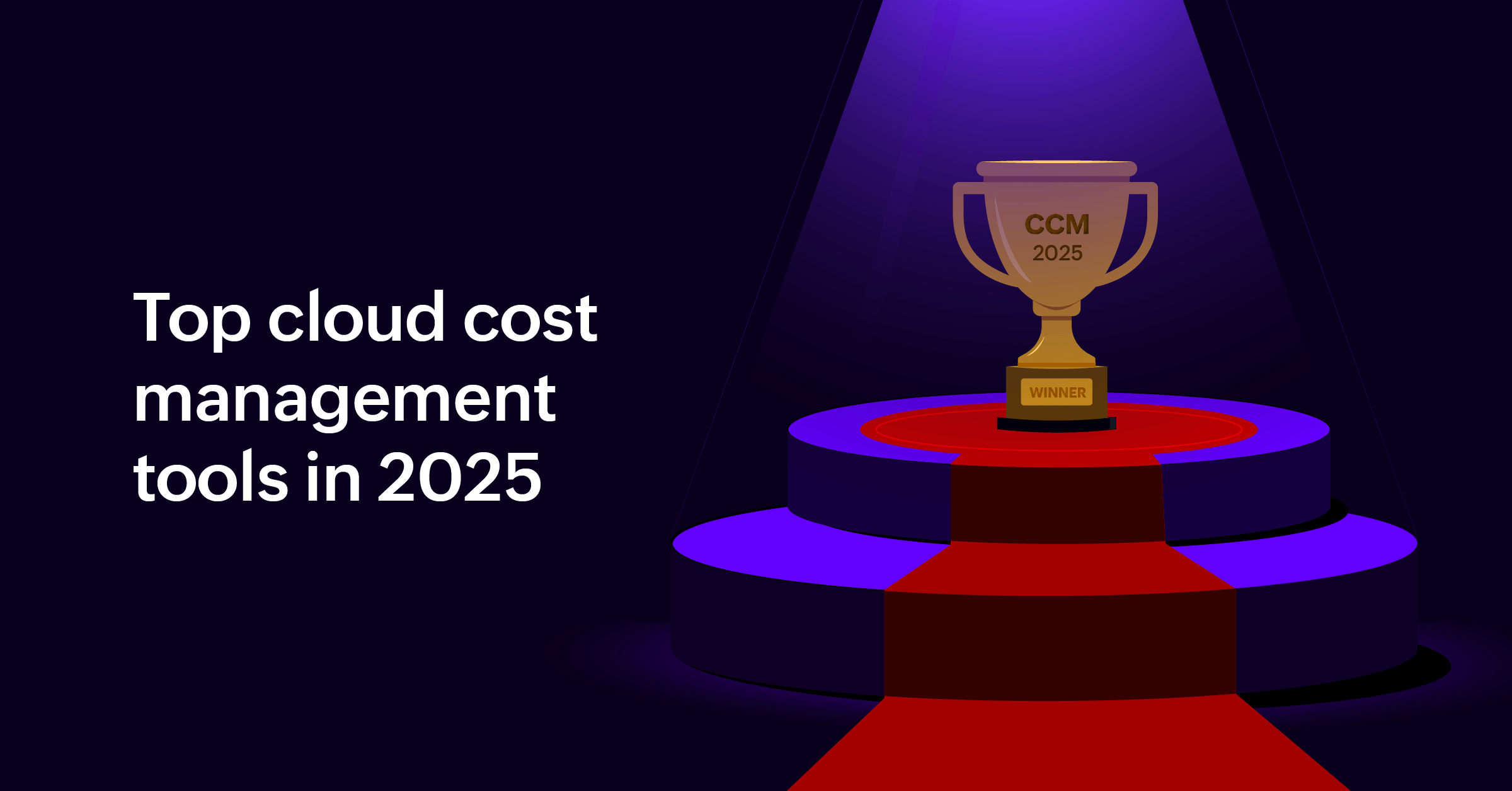
Top cloud cost management tools in 2025
The cloud has revolutionized the way businesses operate, enabling scalability, flexibility, and efficiency. However, the growing complexity of cloud environments often leads to unexpected costs, making cloud cost management (CCM) essential for organizations striving to optimize their budgets. In 2025, organizations are turning to advanced CCM tools to keep their budgets in check and optimize resource utilization. Here’s a detailed look at the top 10 CCM tools to consider in 2025.
1. ManageEngine CloudSpend
ManageEngine CloudSpend leads the pack with its robust, intuitive features designed to empower businesses with granular visibility into cloud costs. Built to seamlessly manage multi-cloud environments, CloudSpend enables organizations to track and optimize their cloud budgets efficiently.
Key features:
-
Anomaly detection: CloudSpend’s advanced anomaly detection feature identifies unusual spikes in cloud spending, helping organizations mitigate unexpected costs. By leveraging AI, it flags potential overspending in real-time and performs critical checks.
-
Smart recommendations: The platform provides actionable recommendations, such as rightsizing resources and switching to cost-effective pricing models, ensuring that organizations maximize ROI.
-
Cloud budgets and forecasting: CloudSpend’s budget management feature allows users to set and track cloud budgets effectively. Its forecasting tools predict future expenditures based on historical data, offering valuable insights.
-
Multi-cloud support: Whether you’re using AWS, Azure, or Google Cloud, CloudSpend provides unified visibility, making it ideal for businesses with diverse cloud setups.
-
Customizable dashboards: With a user-friendly interface, CloudSpend lets you create tailored dashboards to track key metrics that matter most to your business.
Why choose CloudSpend?
CloudSpend’s balance of advanced analytics, real-time insights, and simplicity makes it the top choice for businesses in 2025. Its affordability and ease of use provide significant value, especially for SMBs and enterprises managing complex cloud ecosystems.
2. AWS cost explorer
For organizations heavily invested in Amazon Web Services, AWS Cost Explorer is a built-in tool that helps manage and analyze costs. While it offers great insights for AWS users, it’s limited to a single cloud environment.
Key features:
-
Provides cost and usage reports.
-
Customizable filters for detailed spending insights.
-
Cost forecasting for up to 12 months.
Drawback: Limited to AWS, lacks the multi-cloud support that tools like CloudSpend offer.
3. Azure cost management and billing
Microsoft’s Azure cost management is an excellent choice for businesses operating primarily within the Azure cloud ecosystem. Integrated directly into the Azure portal, this tool simplifies cost tracking and optimization.
Key features:
-
Real-time cost analysis and anomaly detection.
-
Built-in recommendations for resource optimization.
-
Comprehensive budget tracking and alerts.
Drawback: Best suited for Azure users; lacks comprehensive multi-cloud support.
4. Google Cloud billing reports
Google Cloud offers billing reports as a native solution for cost tracking and forecasting. This tool is designed for organizations leveraging Google Cloud Platform (GCP).
Key features:
-
Detailed cost breakdowns by project, service, and region.
-
Budget alerts to prevent overspending.
-
AI-powered recommendations for resource optimization.
Drawback: Focused on GCP; may require integration with third-party tools for multi-cloud environments.
5. CloudCheckr by NetApp
CloudCheckr by NetApp is a powerful CCM tool that combines cost optimization with workload automation. It’s ideal for businesses seeking to automate cloud cost savings.
Key features:
-
Predictive scaling to reduce waste.
-
Real-time cost optimization for cloud-native applications.
-
Multi-cloud support for AWS, Azure, and GCP.
Drawback: Higher cost compared to tools like CloudSpend.
6. CloudHealth by VMware
CloudHealth is a comprehensive platform for cloud cost management and governance. Its rich feature set caters to enterprises managing complex cloud infrastructures.
Key features:
-
Customizable policies for cost governance.
-
Anomaly detection and usage optimization recommendations.
-
Multi-cloud support and integrations with third-party tools.
Drawback: Complexity and cost may not suit smaller organizations.
7. Apptio Cloudability
Apptio Cloudability is a versatile CCM tool that offers extensive features for cost optimization, governance, and cloud resource management.
Key features:
-
Rightsizing recommendations for cloud resources.
-
Anomaly detection and cost trend analysis.
-
Smart tagging in multi-cloud environments.
Drawback: Can be overwhelming for smaller teams due to its enterprise-focused features.
8. Harness
Harness brings DevOps and cost management together, making it a great choice for engineering teams focused on optimizing cloud spend.
Key features:
-
Real-time cost visibility by application.
-
Automated anomaly detection.
-
Integration with CI/CD workflows for seamless cost tracking.
Drawback: Limited features for non-DevOps use cases.
9. Kubecost
For organizations utilizing Kubernetes, Kubecost specializes in monitoring and managing costs in Kubernetes environments.
Key features:
-
Granular visibility into Kubernetes cost optimization.
-
Real-time alerts for budget thresholds.
-
Insights into underutilized resources.
Drawback: Limited utility outside Kubernetes-based setups.
10. Virtana
Virtana provides full stack observability over and above recommendations for cloud cost optimization. Its focus on integrated cost intelligence makes it a standout tool for proactive cost management.
Key features:
-
Automated rightsizing recommendations.
-
Predictive analytics for resource planning.
-
Support for multi-cloud environments.
Drawback: Complex setup and higher pricing compared to simpler solutions.
Why ManageEngine CloudSpend stands out ?
While all the tools listed above offer unique benefits, CloudSpend stands out for its affordability, simplicity, and comprehensive feature set. Unlike many competitors, it excels in:
-
Ease of use: Its user-friendly interface ensures that even non-technical users can track and manage cloud costs effortlessly.
-
Multi-cloud capabilities: Seamlessly handles AWS, Azure, and GCP costs under one platform.
-
Cost efficiency: Priced competitively, making it accessible to SMBs without compromising on features.
By choosing CloudSpend, businesses can ensure an optimal resource utilization and significant savings. Cloud cost management is no longer optional in today’s digital landscape. If you’re looking to streamline your cloud cost management strategy in 2025, CloudSpend should be your go-to choice. Stay tuned for more updates and start exploring the latest features by visiting our features pages. To learn more, refer to our documentation and schedule a demo of CloudSpend.
